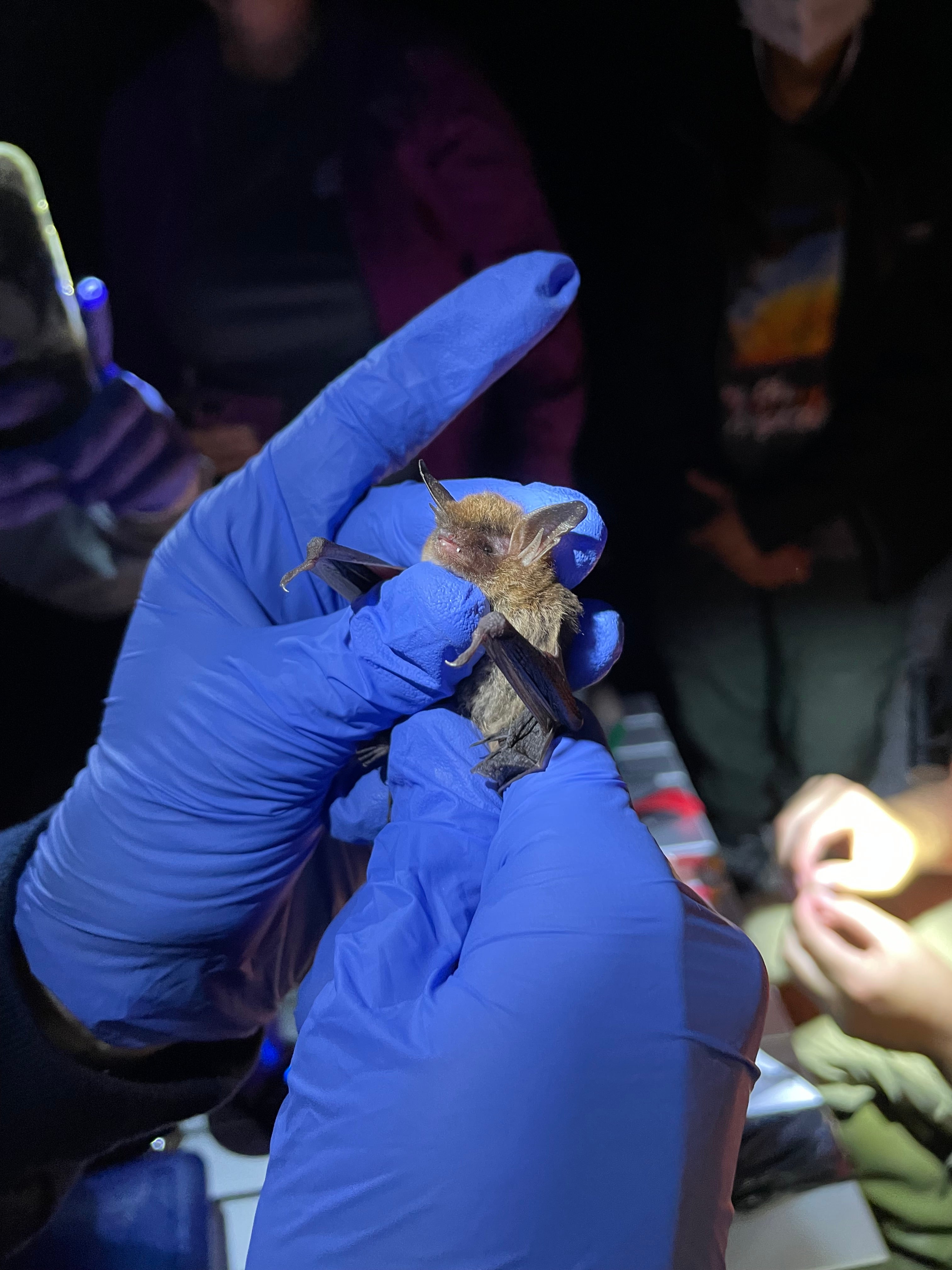Biologists with the Wildlife and Freshwater Fisheries (WFF) Division of the Alabama Department of Conservation and Natural Resources (ADCNR), the U.S. Fish and Wildlife Service (USFWS) and the Alabama Bat Working Group (ABWG) have discovered a breeding population of endangered northern long-eared bats (Myotis septentrionalis) in coastal Alabama.
The bats were discovered during the ABWG’s annual Bat Blitz – an event held in a different location of the state each year to inventory local bat populations.
This year’s Bat Blitz took place in Baldwin and Mobile counties in May 2023. On the last day of the event, one male and two pregnant female northern long-eared bats were captured and released on a Forever Wild Land Trust tract within the Perdido River Wildlife Management Area (WMA) in Baldwin County. Prior to the 2023 Bat Blitz, the species had not been documented in southwest Alabama.
“We focused our efforts in coastal Alabama after the discovery of northern long-eared bats in coastal North Carolina and South Carolina,” said Nick Sharp, WFF Bat Biologist for Alabama. “This discovery is significant as there are no caves in these locations and the bats apparently do not hibernate. Rather, they are active year-round and therefore not exposed to white-nose syndrome.”
Northern long-eared bats were once one of the most common bats in eastern North America but the species has been decimated by WNS – a deadly fungal disease that affects hibernating bats. According to the USFWS, WNS has caused declines of 97 to 100 percent in affected northern long-eared bat populations. Due to extreme population declines, the northern long-eared bat was federally listed as endangered under the Endangered Species Act in 2022.
“The Department of Conservation and Natural Resources has been intentional about acquiring land along the Perdido River corridor to add to the land that currently encompasses the Perdido WMA,” said Chris Blankenship, ADCNR Commissioner and Chairman of the Forever Wild Land Trust Board of Trustees. “The discovery of this endangered species in the area we are working to protect is further evidence of the importance of this land in eastern Baldwin County."
In June 2023, a second effort was made to catch additional northern long-eared bats at the Perdido River WMA with the goal of locating a maternity colony. This attempt resulted in the capture of another male and a lactating female, indicating the female had given birth in the area.
“The bats were fitted with radio-tags in an attempt to track them to their daytime roost, but the effort was unsuccessful,” Sharp said. “However, the ability to return to the site and catch more northern long-eared bats substantiates a resident, breeding population in the area. Coastal Alabama can be added to the list of locations where these bats may survive white-nose syndrome.”
For more information about northern long-eared bats in Alabama, visit www.outdooralabama.com/bats/northern-long-eared-myotis.
To learn more about ADCNR’s bat monitoring and conservation efforts, visit www.outdooralabama.com/nongame-wildlife-program/alabama-bat-monitoring-and-conservation.
ADCNR promotes wise stewardship, management and enjoyment of Alabama’s natural resources through four divisions: Marine Resources, State Parks, State Lands, and Wildlife and Freshwater Fisheries. Learn more at www.outdooralabama.com.
###







